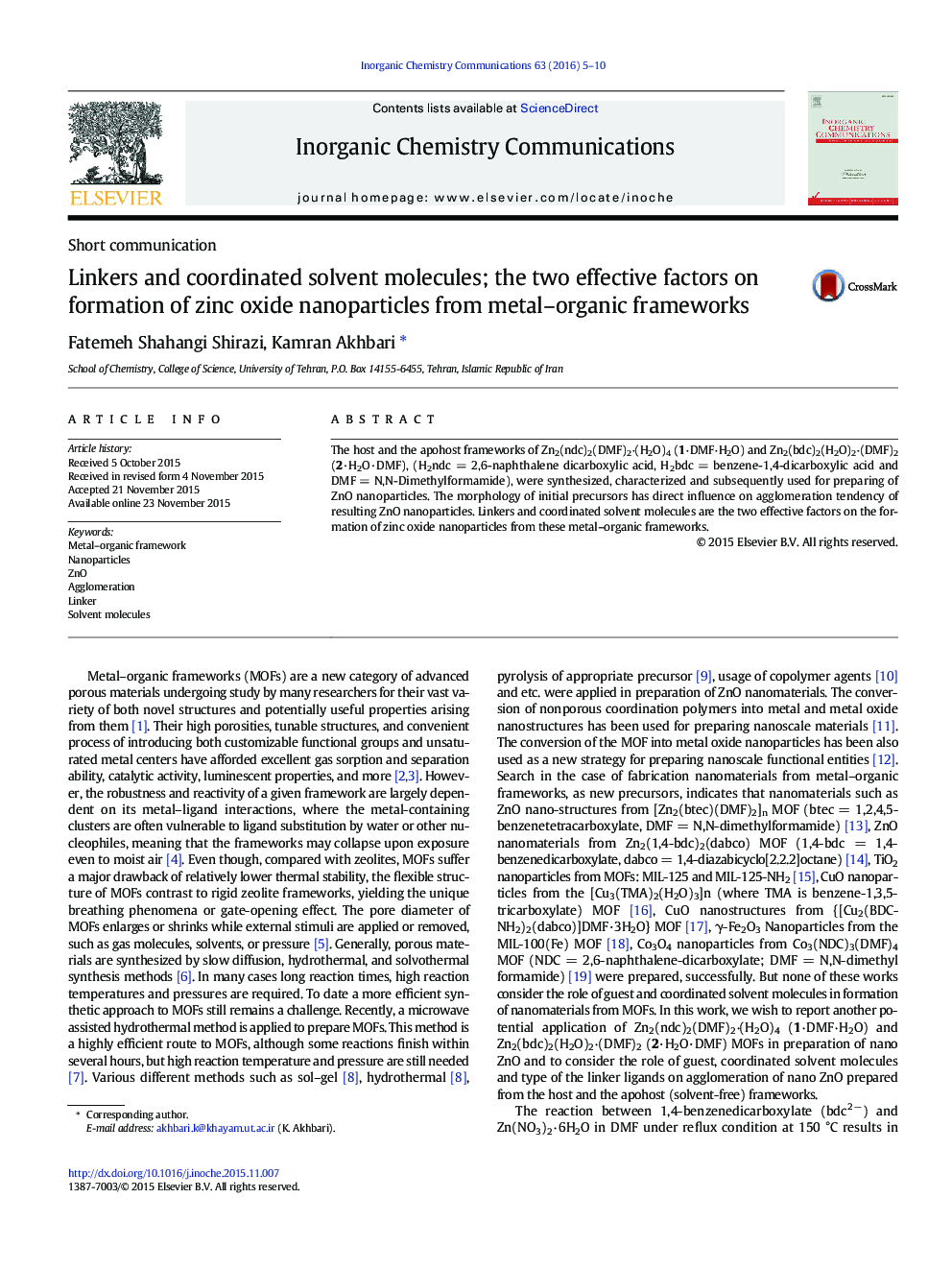| کد مقاله | کد نشریه | سال انتشار | مقاله انگلیسی | نسخه تمام متن |
|---|---|---|---|---|
| 1305302 | 1498927 | 2016 | 6 صفحه PDF | دانلود رایگان |
• The host and apohost frameworks of two MOFs were used for preparation of nano ZnO.
• The morphology of initial precursors has direct influence on morphology of nano ZnO.
• Types of the linker ligands and solvent molecules affect on formation of nano ZnO.
• In one case, solvent molecules and in another linker ligand is the effective factor.
• The role of ligands and guest molecules is similar to the polymeric stabilizers.
The host and the apohost frameworks of Zn2(ndc)2(DMF)2 ∙(H2O)4 (1 ∙ DMF ∙ H2O) and Zn2(bdc)2(H2O)2 ∙(DMF)2 (2·H2O·DMF), (H2ndc = 2,6-naphthalene dicarboxylic acid, H2bdc = benzene-1,4-dicarboxylic acid and DMF = N,N-Dimethylformamide), were synthesized, characterized and subsequently used for preparing of ZnO nanoparticles. The morphology of initial precursors has direct influence on agglomeration tendency of resulting ZnO nanoparticles. Linkers and coordinated solvent molecules are the two effective factors on the formation of zinc oxide nanoparticles from these metal–organic frameworks.
The host and the apohost frameworks of two nano-porous MOFs with similar linkers were used for preparation of ZnO nanoparticles. The influence of guest molecules, coordinated solvent molecules and linker ligands on their morphology and agglomeration process was studied.Figure optionsDownload as PowerPoint slide
Journal: Inorganic Chemistry Communications - Volume 63, January 2016, Pages 5–10
